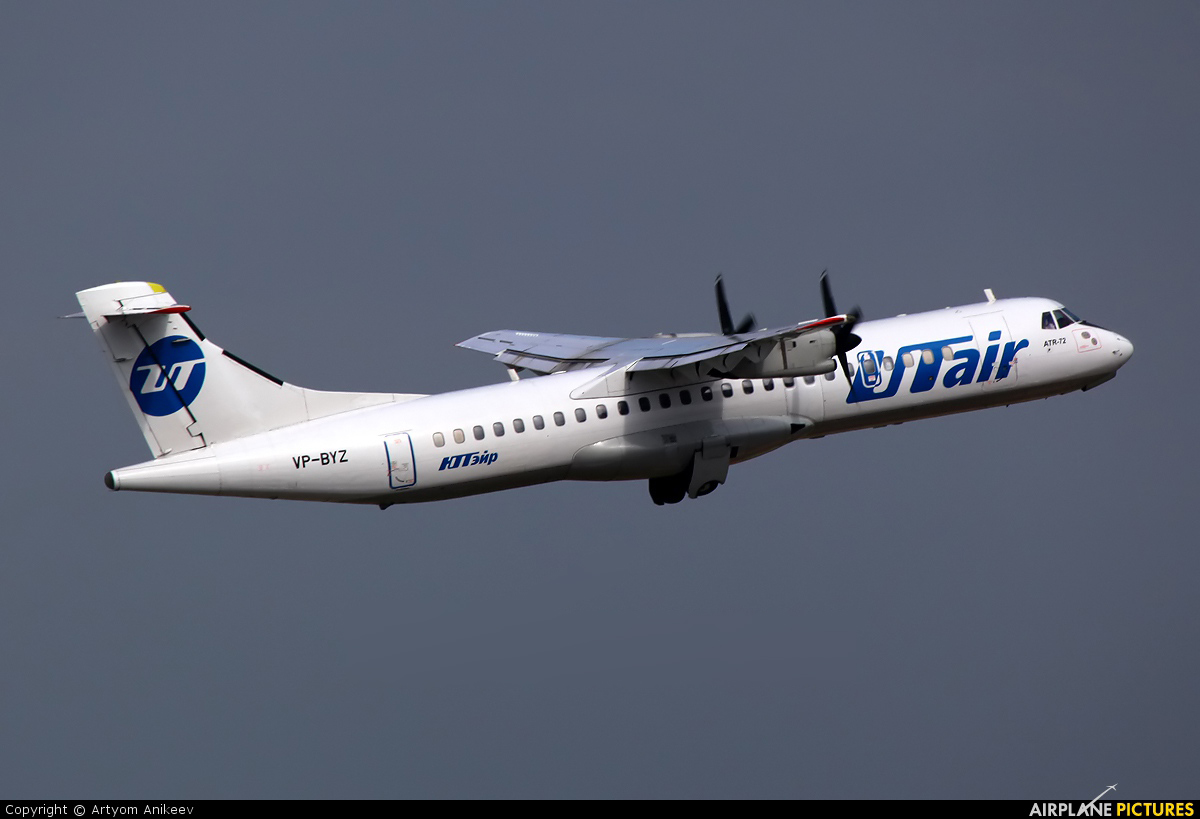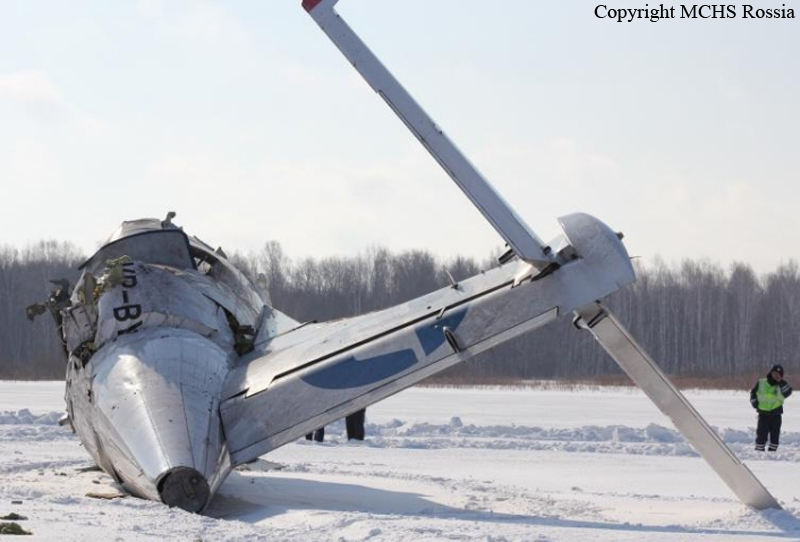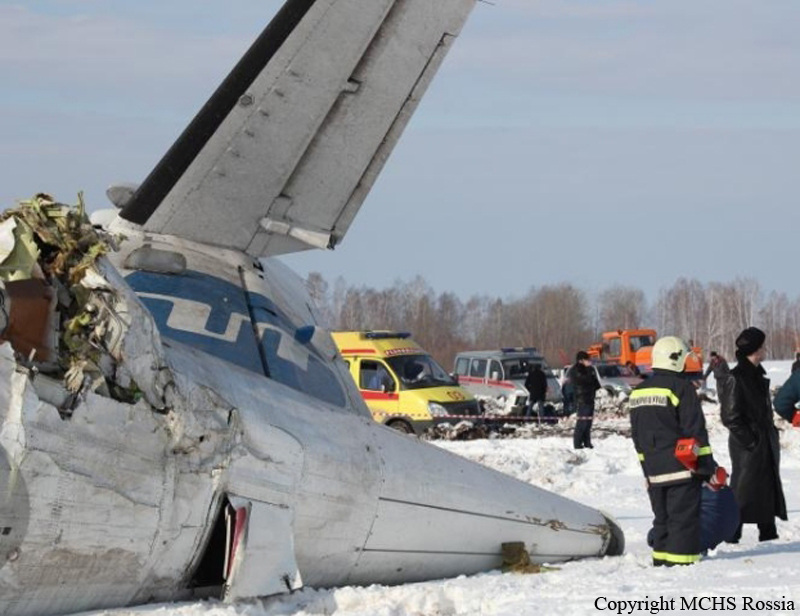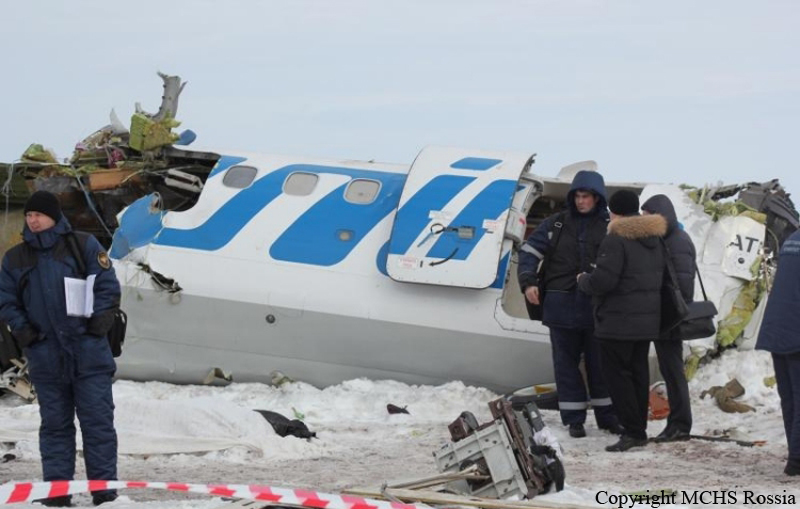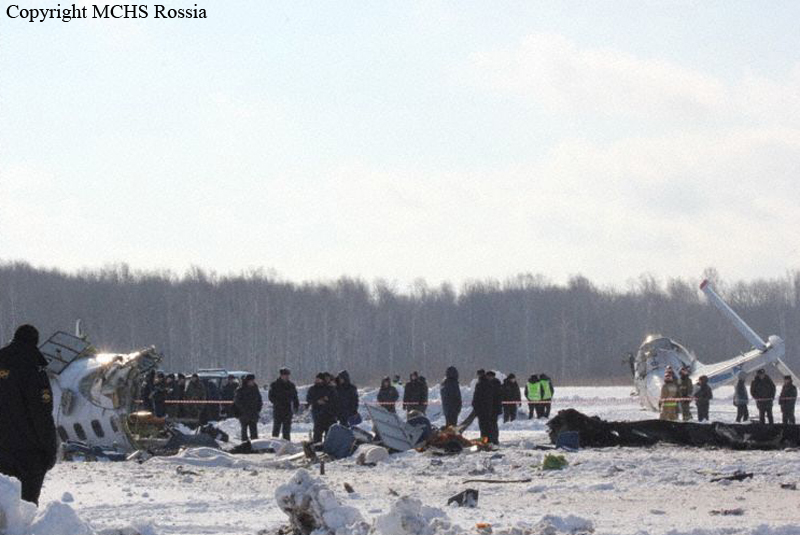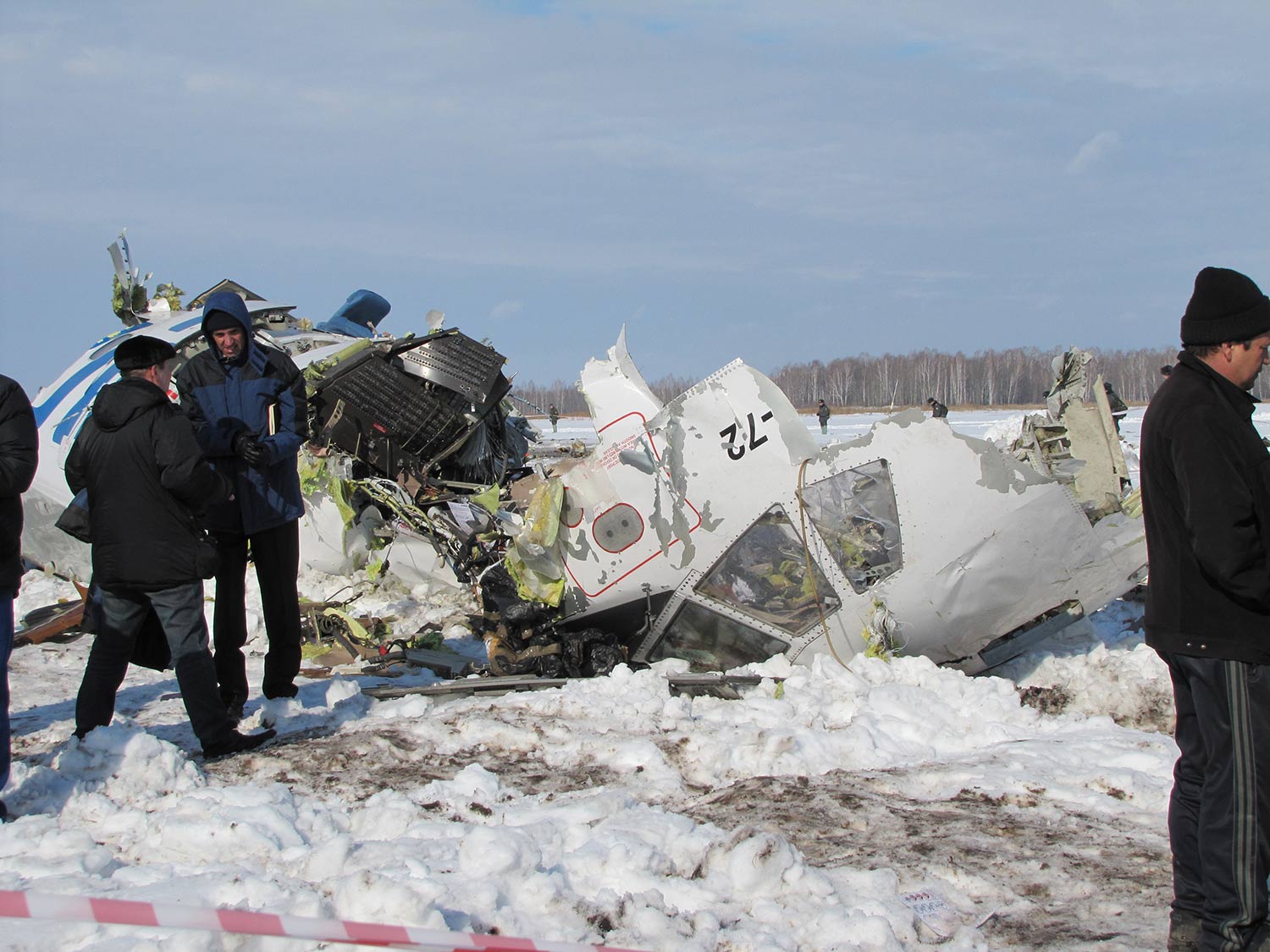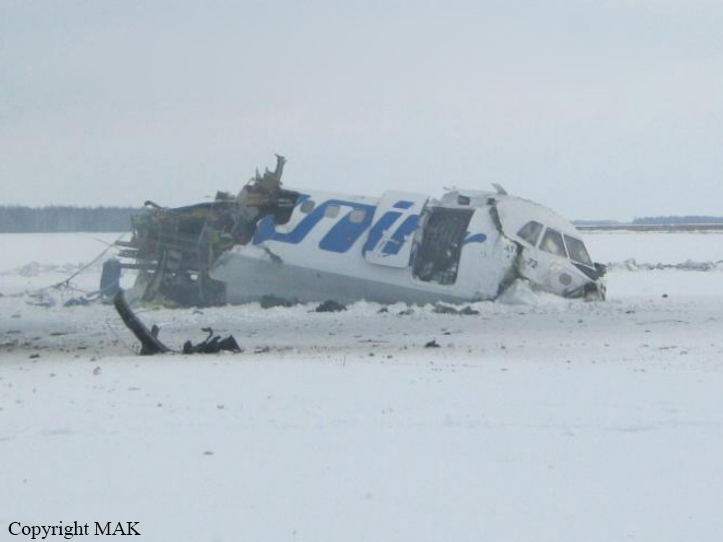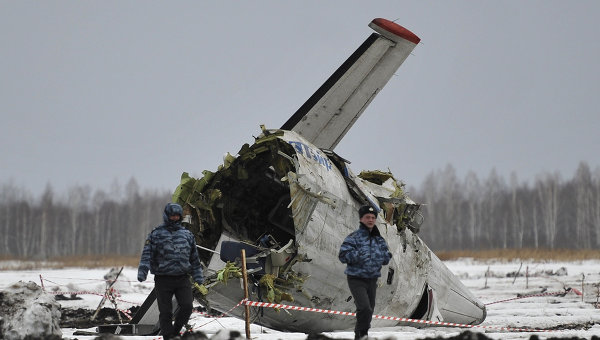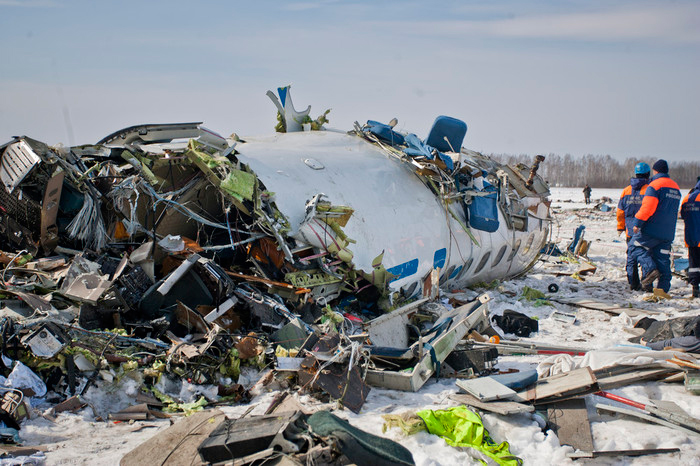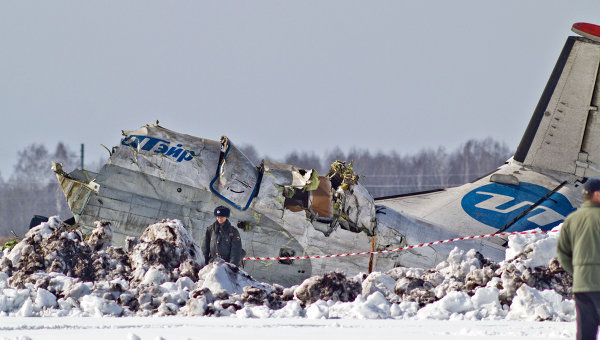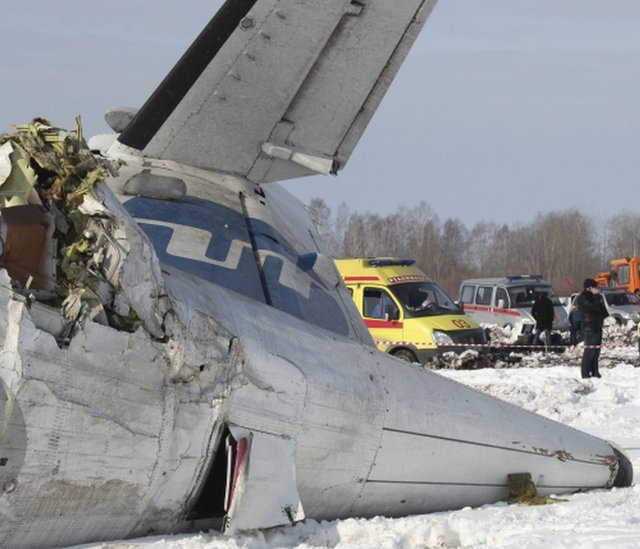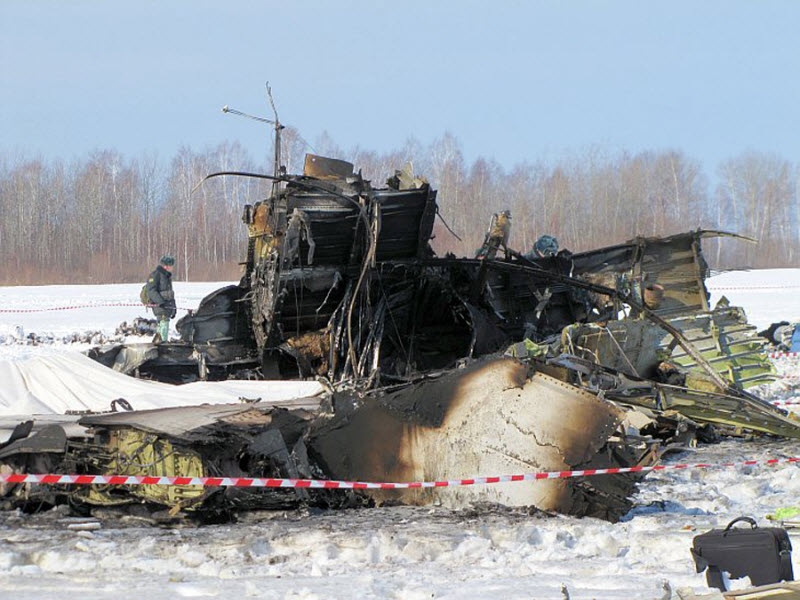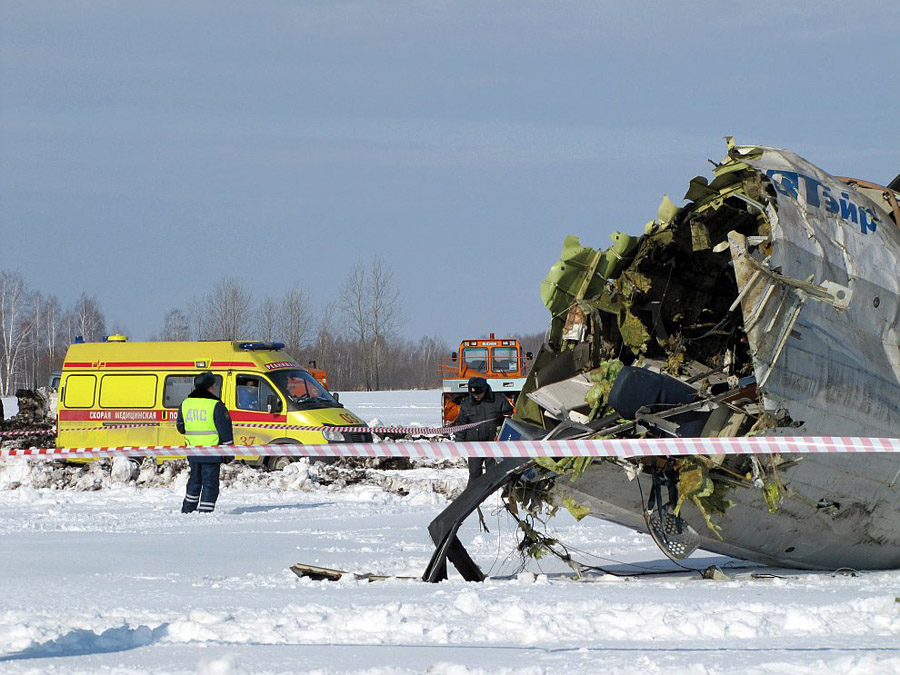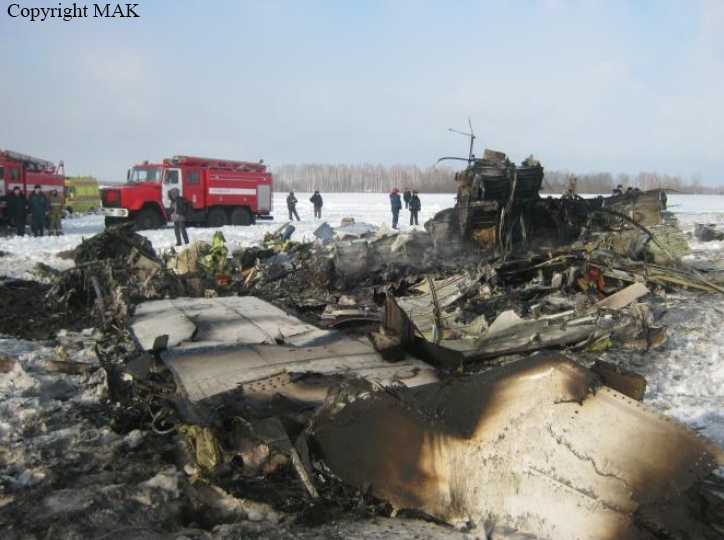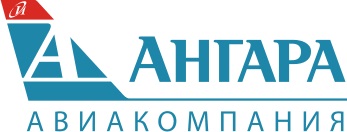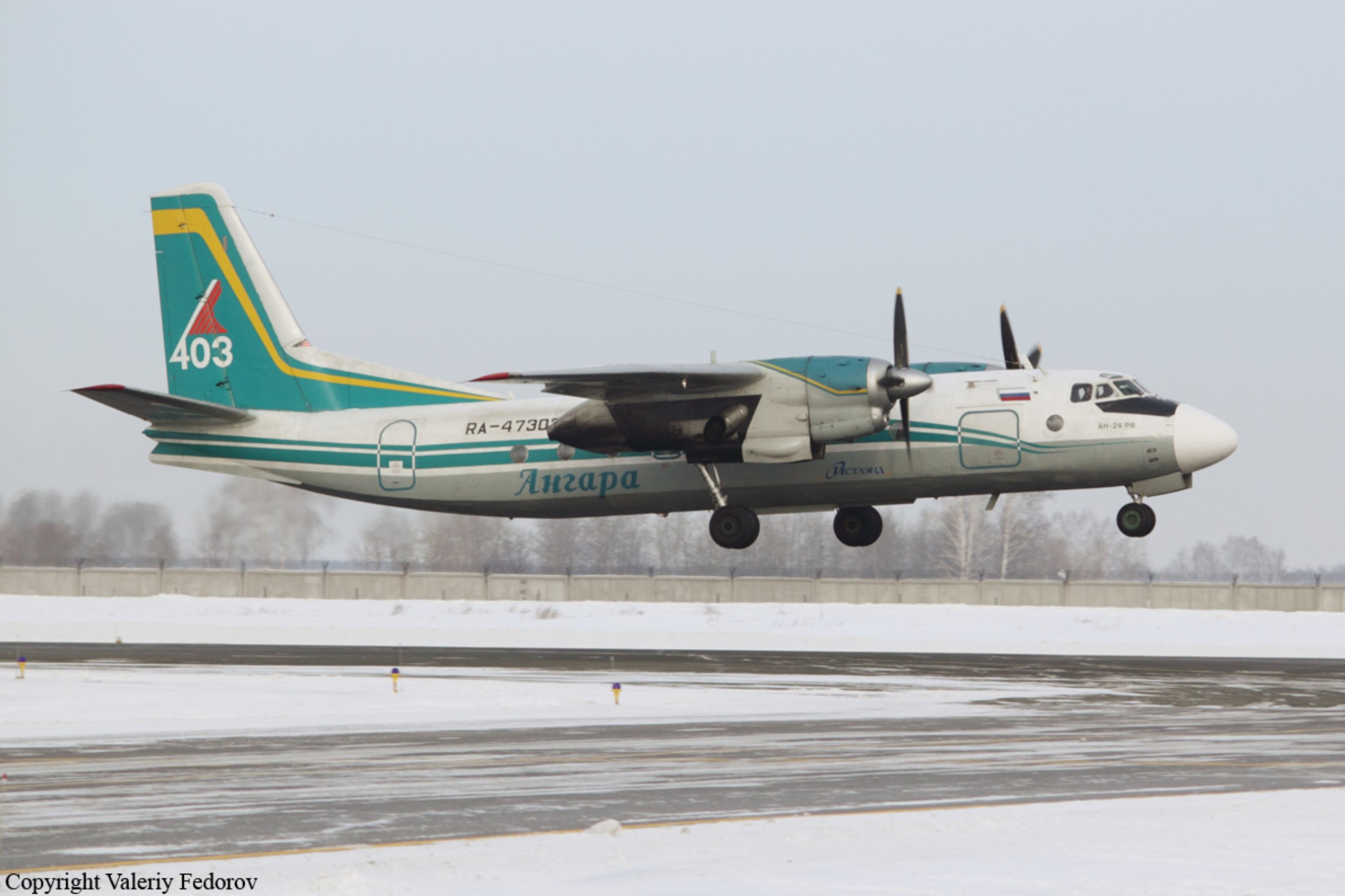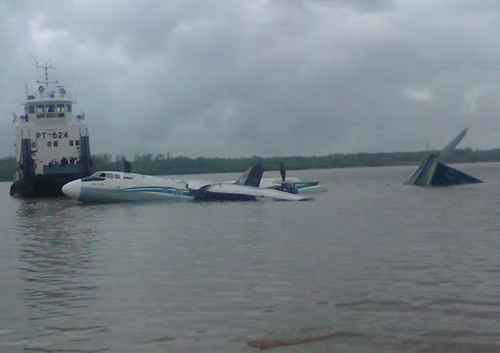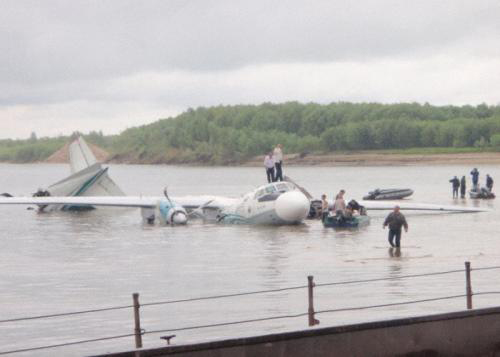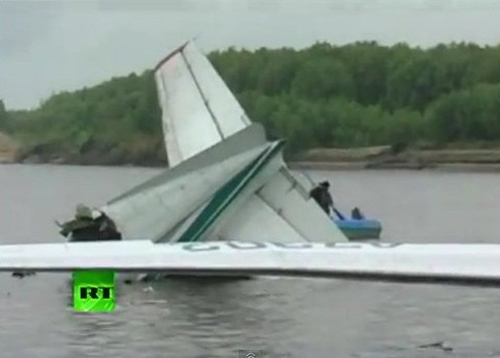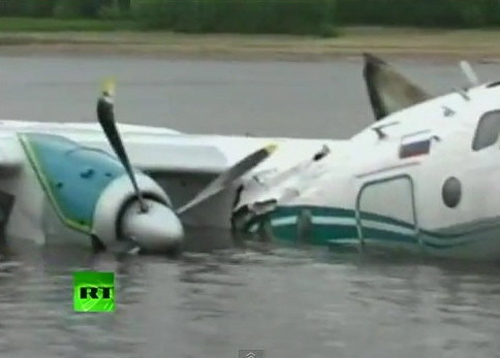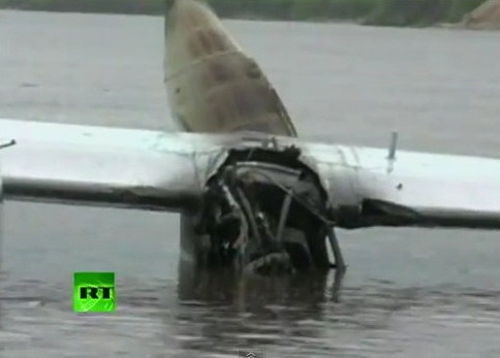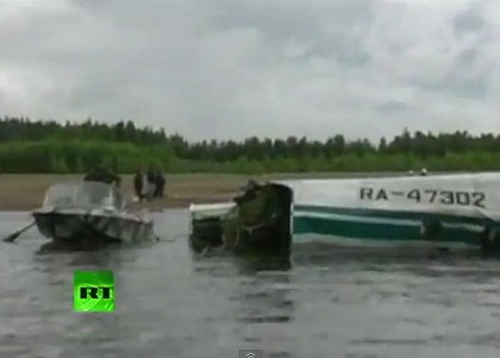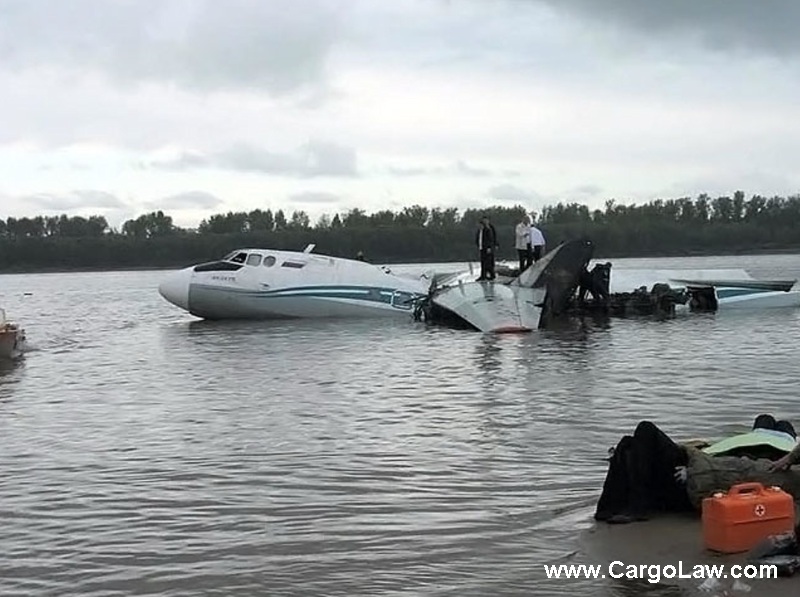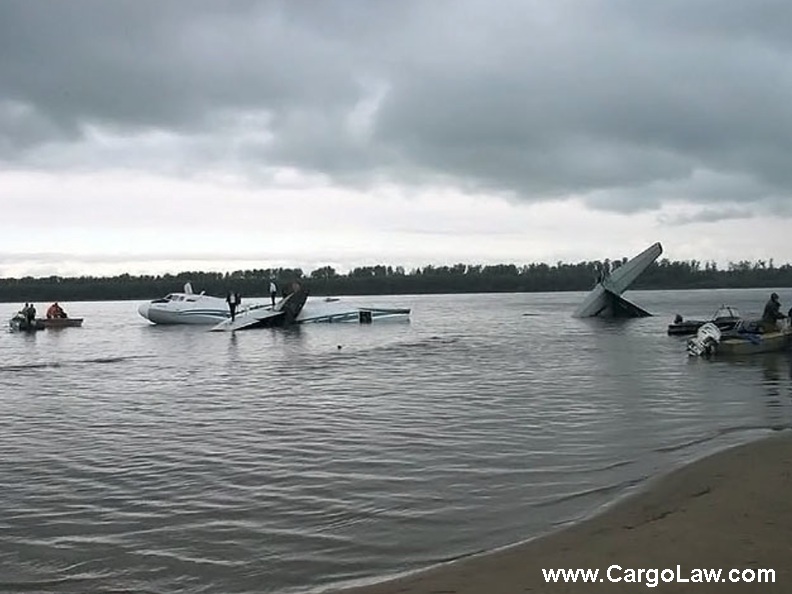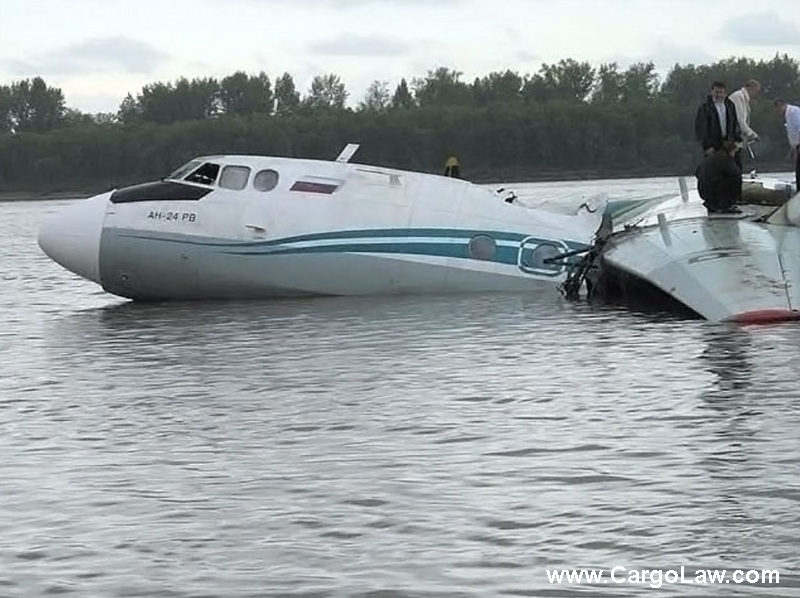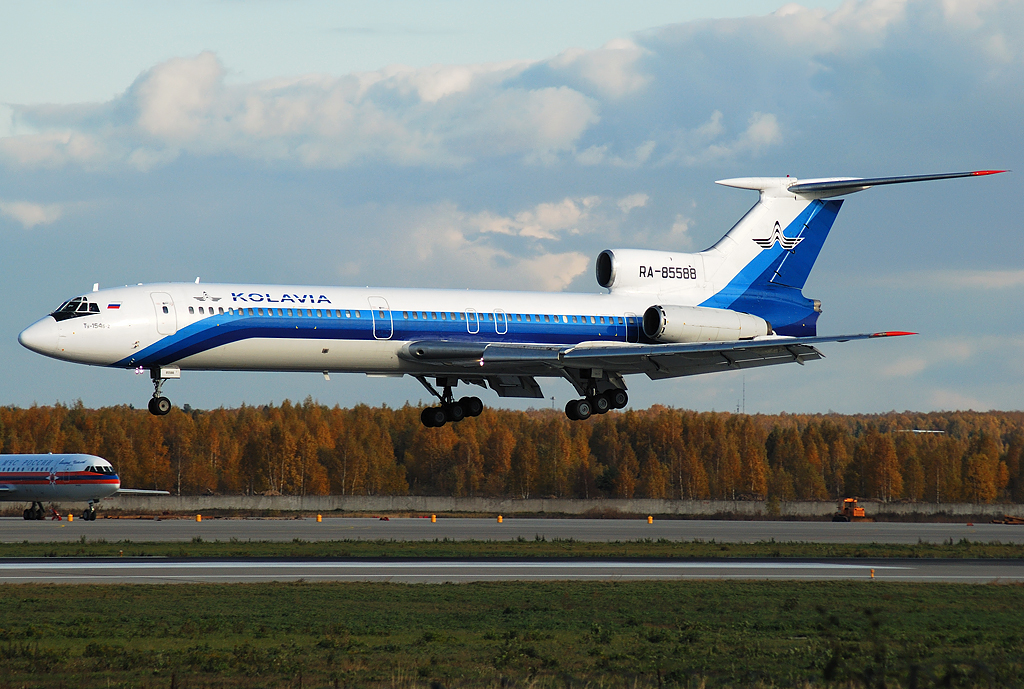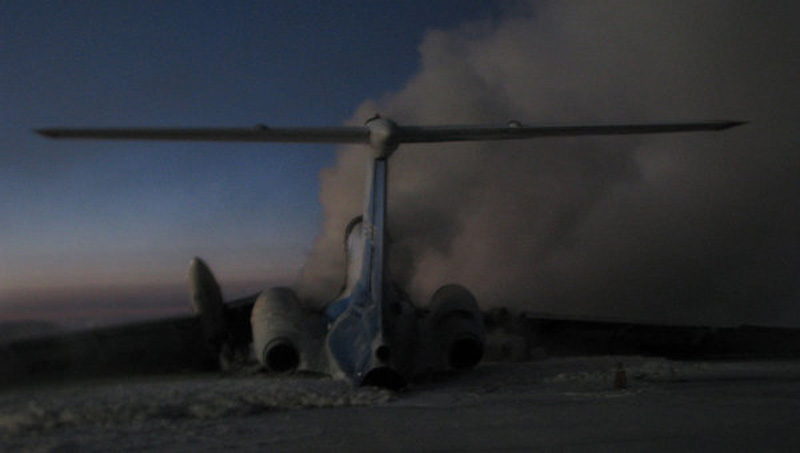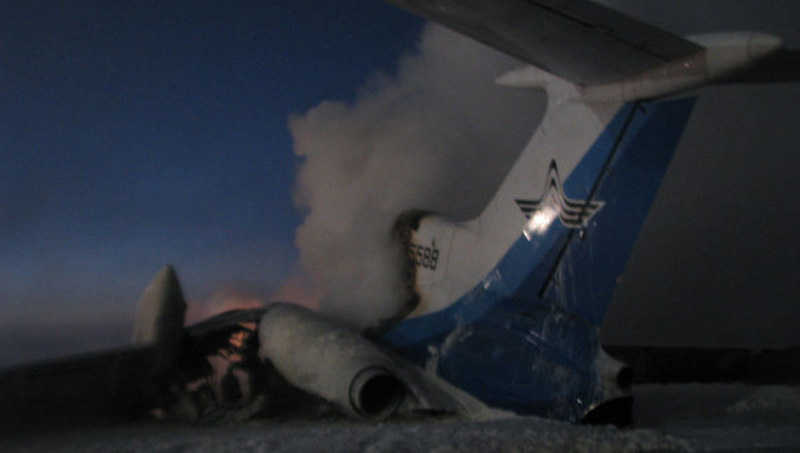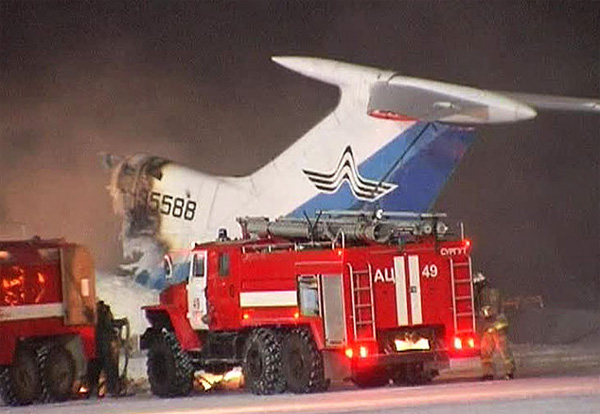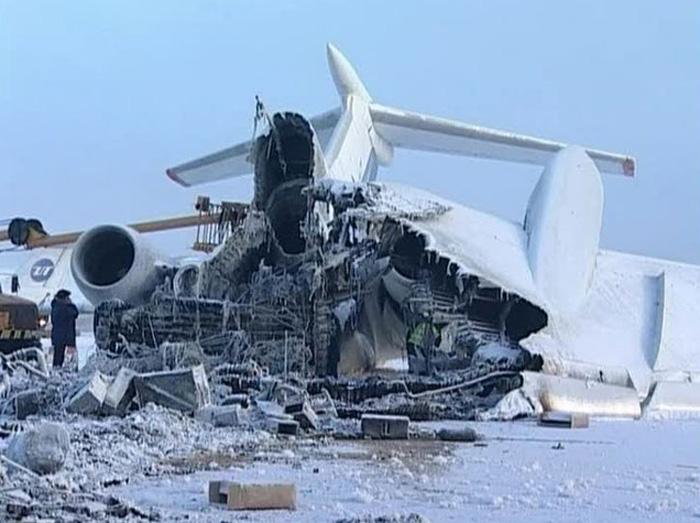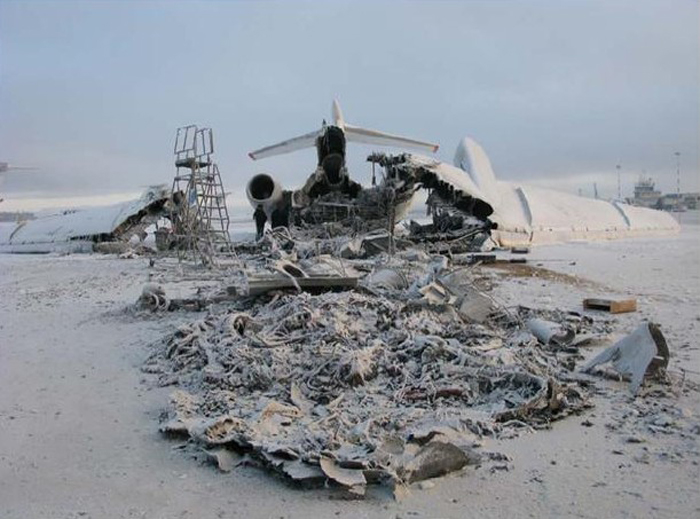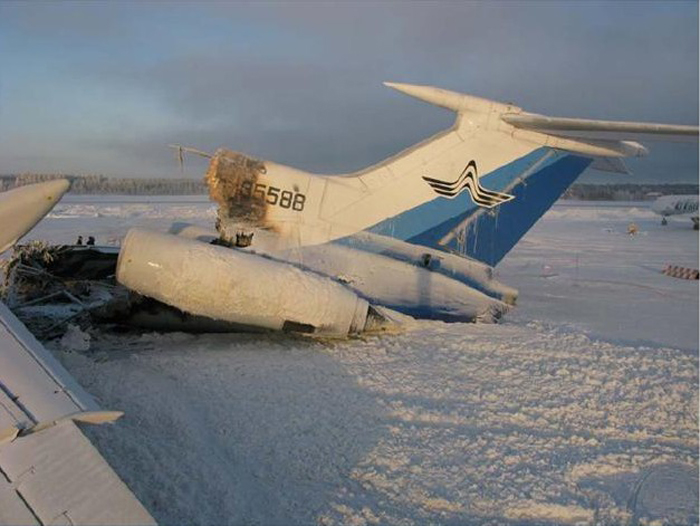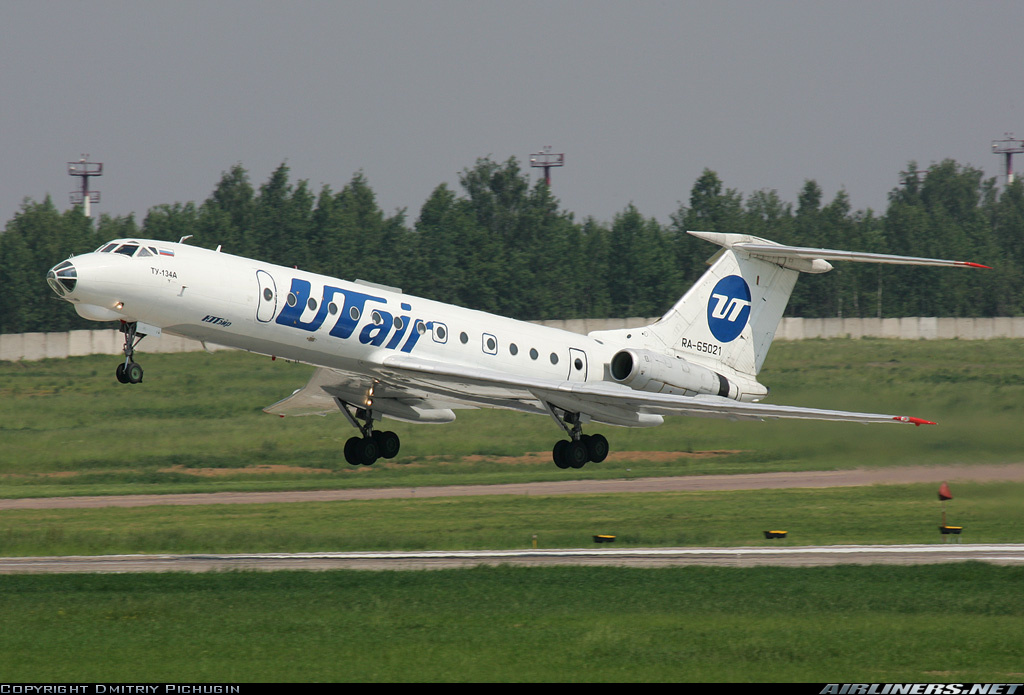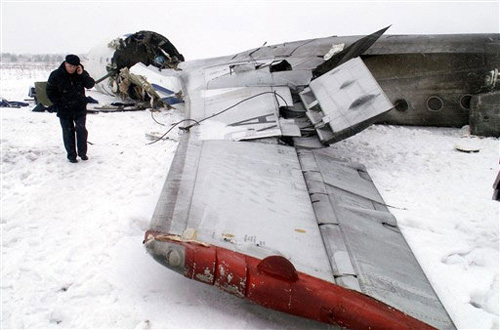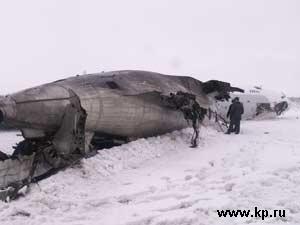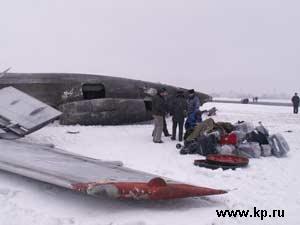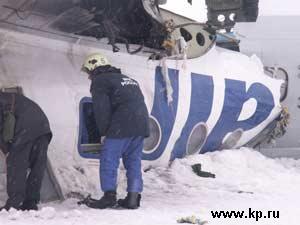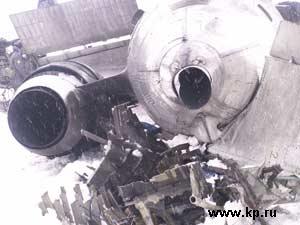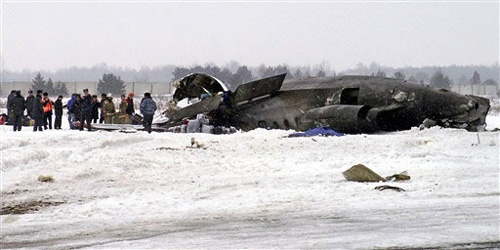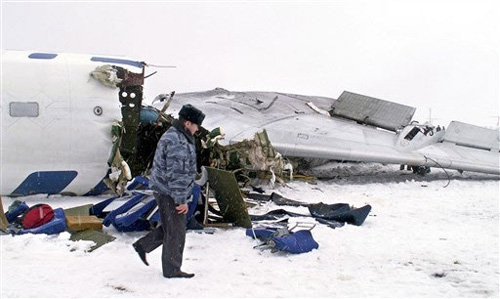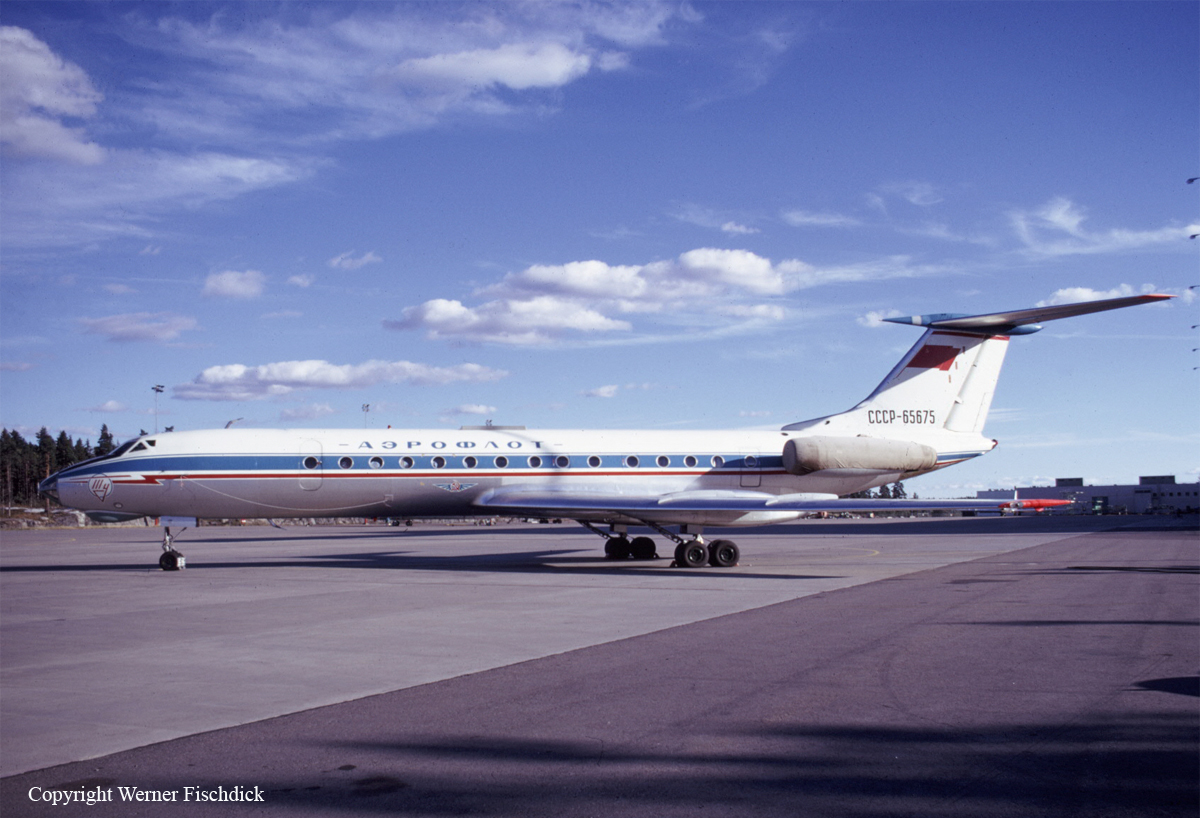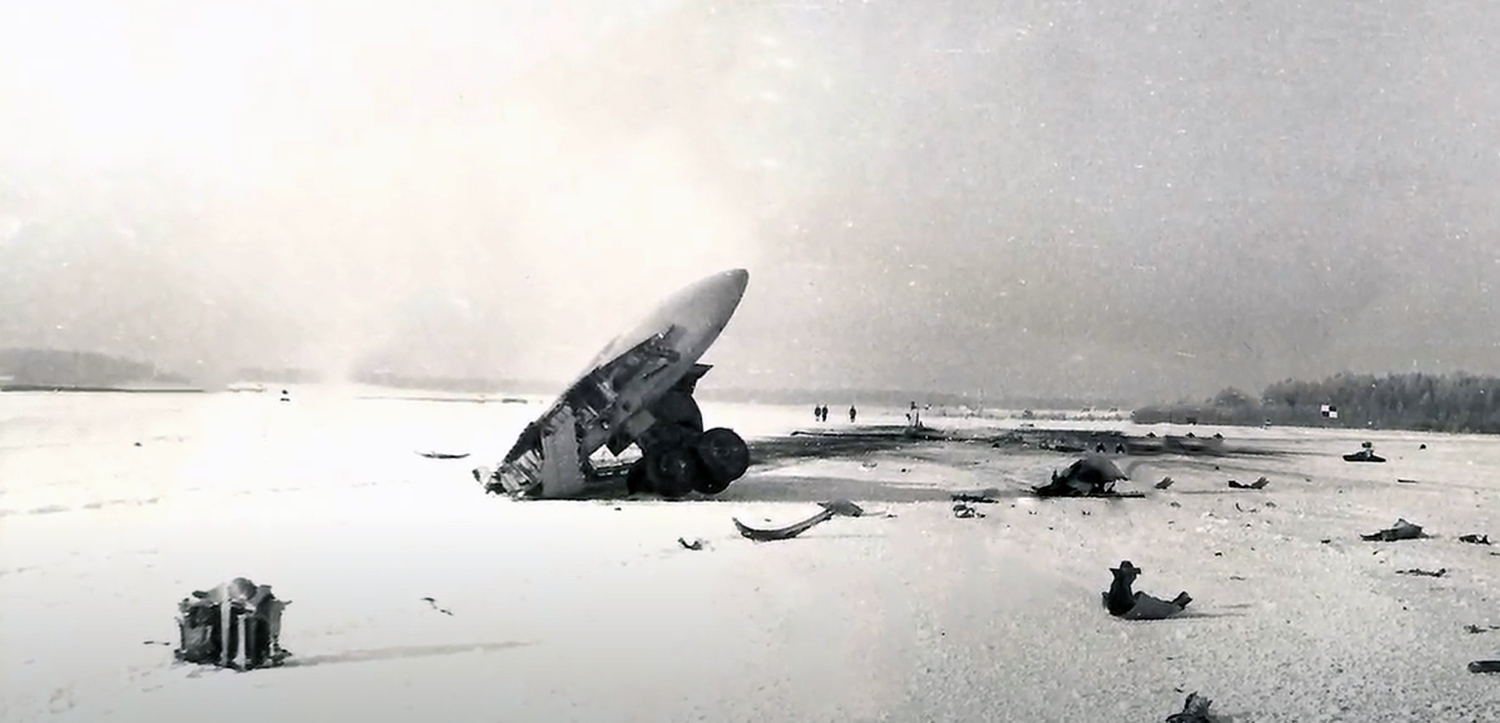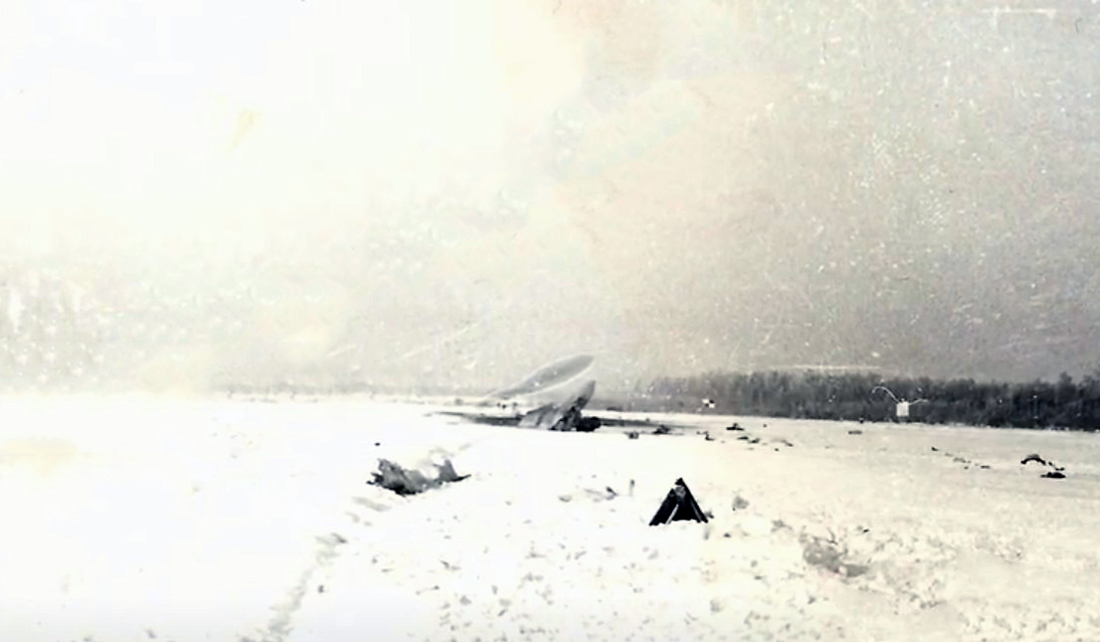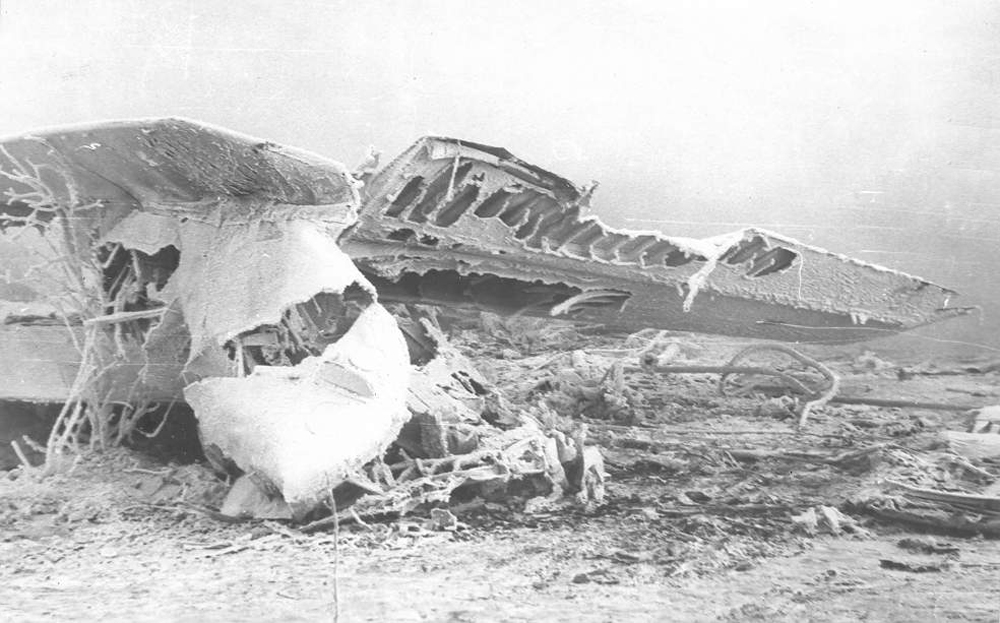Crash of an ATR72-201 in Tyumen: 33 killed
Date & Time:
Apr 2, 2012 at 0735 LT
Registration:
VP-BYZ
Survivors:
Yes
Schedule:
Tyumen - Surgut
MSN:
332
YOM:
1992
Flight number:
UT120
Crew on board:
4
Crew fatalities:
Pax on board:
39
Pax fatalities:
Other fatalities:
Total fatalities:
33
Captain / Total hours on type:
2522.00
Copilot / Total hours on type:
1765
Aircraft flight hours:
35523
Aircraft flight cycles:
49663
Circumstances:
On 01.04.2012 the the UTAir Air Division 1 crew (based at Surgut AP) was conducting a scheduled passenger flight UTA-119 on the АТR 72-201 VP-BYZ A/C from Surgut to Tyumen. The landing at Tyumen (Roschino) AP was performed at 17:41 (23:41 local time). Descending for landing at Roschino (Tyumen) AD was conducted in extended cloudiness with icing conditions. According to the FDR records, the flight crew used the aircraft ice protection system. At the time of flight UTA-119 landing at Roschino (Tyumen) AD the weather was as follows: surface wind 090°-7 m/s, visibility 1600 m, showers of moderate snow with rain, significant cumulonimbus (5-7 oct.) clouds, fractonimbus, cloud base at 140 m, temperature + 0.2°C, dew point + 0.2°C, QFE 735 mmhg (980 hPa), friction coefficient 0.6; moderate icing at cloud layer from 140 m to 4800 m. Forecast for landing: tempo visibility 500 m, showers of heavy snow with rain, vertical visibility 90 m. Weather at Roschino (Tyumen) AD at day time on 01.04.2012 and at night from 01.04.2012 to 02.04.2012 was formed by the cyclone trough forward part with the widespread precipitation area associated with warm front. A passage of the warm front through Roschino (Tyumen) AD was expected in the period from 20:00 to 21:00, with a temperature of 0°C and relative humidity 100% precipitations were fallen from the cumulonimbus and fractonimbus clouds in form of showers of snow with rain. Visibility in precipitations was 1200–1600 m with individual charges of heavy wet snow with visibility 600–700 m and vertical visibility 100 m. Precipitation was followed by east wind 9–10 m/s, direction 90–110°, with individual gusts up to 13–14 m/s. This direction of wind remained till 21:00. After the passage of front through the region of Roschino (Tyumen) AD, at 21:05 the surface wind changed its direction to the west 250° – 260° with gradual increase of wind speed from 2–4 m/s to 7–10 m/s. Precipitation in the form of showers of moderate snow with rain at Roschino (Tyumen) AD went on till 22:00, 01.04.2012. From 22:00, 01.04.2012 to 01:00, 02.04.2012 precipitation turned into showers of slight snow with rain with a temperature of 0°C and relative humidity 100%. According to the observations of weather stations situated at a distance of about 200– 250 km from Roschino (Tyumen) AD and affected by the cyclone on 01.04.2012 as well as on 02.04.2012 storm detecting information was sent to the Roschino (Tyumen) AD AMC about glaze-ice accretion of wet snow. After the landing the A/C was placed at stand 3 heading to the air terminal (MH 30°). According to the flight shift work schedule, the crew left for rest to the Liner Hotel at Roschino AP and had a rest till 23:30 (05:30 local time). After having their rest, the crew members arrived to the AP and started the preflight preparation for the UTA120 scheduled passenger flight from Tyumen to Surgut with visiting AMC where at 00:15 they got weather briefing and documentation. The Nizhnevartovsk AD had been appointed as the alternate AP. At the end of the weather briefing the PIC received Form АВ-11 No.1 and put his signature at the sheet of the "Log of flight crews’ weather briefings at Tyumen-Roschino AMC" indicating the flight number and the A/C number. The weather forecast and actual weather at the departure AD, destination AD and alternate AD as well as their technical conditions did not imply any hazard for the flight operation. At 00:20 the crew passed a medical examination at the AP pre-start medical station and was cleared for the flight. According to the intra-airport radio conversation, around the same time the PIC made his decision to fly. After the medical examination, the F/O visited the aeronautical information office and received a navigator’s briefcase and flight plan; which is recorded in pertinent logbooks. Further, the crew continued the preflight preparation in the briefing room. According to the load documents there were 39 passengers, 133 kg of cargo, 143 kg of passengers’ luggage, and 1 kg of mail registered for the UTA120 flight. The fuel on board was 2000 kg, the A/C TOW was 18730 kg, the A/C weight balance was 30.72% mean aerodynamic chord. The TOW and weight balance were inside the AFM (FCOM) limitations. According to an avionics technician's statements the crew arrived to the A/C around 00:30. By the external observation video camera records it can be seen that the PIC performed the preflight inspection very briefly. He lingered for a few minutes by the right engine then moved along the fuselage sides, then stopped by the left main gear, and finally went into the cockpit. The after-inspection FTLB entry made by the PIC was: "LC PERFORMED BY CDR", the PIC also put the time of inspection which was 00:40 and quantity of fuel 2000 kg. There were no remarks made against the A/C condition in the FTLB. By the records of the external observation video camera, it can be seen that at 01:13 the boarding had been completed and the entrance door was closed. So, the A/C had been remaining at the AD under the influence of precipitations in the form of rain and wet snow with ambient temperature around zero degrees Celsius and wind velocity more than 10 m/s for more than 7 hours. There was no de/anti-icing treatment performed for the A/C before the flight. At 01:20 the flight crew performed the engine start, and after that passed through the Before Taxi checklist. At 01:24:46 the flight crew obtained clearance for holding position. At 01:32:08 after clearance for lineup position the flight crew reported: “Lining up”. At 01:32:58 the A/C started taking off. The takeoff was performed with flaps extended at 15°. The A/C lift-off occurred at 01:33:28 with a speed of around ≈127 kt. At 01:33:56 at height 600 ft2 and speed of 135 kt the A/P was engaged. At 01:34:00 at height 640 ft and speed of 139 kt the flaps retraction was started. At 01:34:08 after the retraction had been completed, at 690 ft and at a speed of 150 kt uncommanded development of right bank started. At 01:34:10 the A/P was disengaged. The bank angle reached around 40° to the right within 3 s and after that was counteracted by ailerons and rudder deflection. Further, the A/C banked to the left, which the flight crew was not able to compensate with full deflection of ailerons to the right. The A/C collision into terrain occurred at 01:34:35 with a pitch down angle ≈11°, left bank angle ≈55° and vertical rate of descent over 20 m/s. The ASL elevation of the accident area is about ≈110 m. The accident resulted in the A/C full destruction and partial damage by the ground fire. From the 43 persons onboard 4 crew members and 29 passengers were killed. Others sustained serious injuries.
Probable cause:
The immediate cause of the АТR 72-201 VP-BYZ aircraft accident was the PIC’s decision to takeoff without de/anti-icing treatment despite the fact that snow and ice deposits were present on aircraft surface and were discovered by the crew members during taxi which resulted in degradation of aircraft aerodynamic performance and stall during climbing after takeoff as well as inability of the crew to recognize stall and, consequently, failure to undertake recovery procedure. The aircraft stall occurred at the operational angles of attack right after flaps retraction with engaged autopilot before stall warning system activation and was caused by the loss of the wing lift effectiveness due to takeoff with non-removed ground icing. The system cause of the accident were shortcomings in ground handling activities and staff training in UTAir-Technik that became possible because of absence of due monitoring by the Technical and Operation Supervising Directorates of UTAir airline for compliance with airline requirements regarding ground handling and aircraft ground icing protection which resulted in erroneous evaluation of aircraft conditions by the PIC and aircraft mechanic (the shift head kept himself aloof from monitoring mechanic’s activities) after the aircraft has been on ground in icing conditions for a long time and in release the aircraft to fly without de/anti-icing treatment.
The contributing factors were:
- The shortcomings in the UTAir safety management system, which contains, all in all, general issues only and is not adopted for the implementation of Airline activities in particular areas, which did not allow to reveal and correct existing safety risks in a timely manner.
- The shortcomings in the UTAir-Technic quality management system, resulted in neglecting of certain requirements of the UTAir ground handling management manual regarding staff training and monitoring for aircraft de/anti-icing treatment which led to the situation when not sufficiently-qualified staff performed the evaluation of the aircraft surface conditions and made the decision on need for the aircraft to be de-iced/anti-iced.
- The absence at the time of the accident of basic regulations in force that establish state requirements for ground handling (de/anti-icing treatment in particular) including staff training and organization licensing.
- The shortcomings in crew members initial and recurrent training as far as the danger of ground icing, its influence on the aircraft aerodynamic performance together with aircraft anti-icing system operation features and design are concerned that did not allow the crew to make the only appropriate decision to return for de-icing/anti-icing treatment after the observation of the snow and ice contamination on the wing after anti-icing system activation in de-icing mode while taxiing for takeoff.
- The methodological imperfection of the crew computer based and simulator training programs concerning the prevention of aircraft stall, identification of approach to stall and taking timely actions for recovery.
- The increasing need for number of flight crews to perform highly growing flights schedule which, with ineffective SMS, resulted in flight instructor work deficiencies during PIC training and absence of PIC skills to take correct decisions and to strictly comply with the regulations in force.
- The possible fatigue of the crew members due to the violation of the work and rest balance while performing split flight shifts together with a large number of unused days-off.
The contributing factors were:
- The shortcomings in the UTAir safety management system, which contains, all in all, general issues only and is not adopted for the implementation of Airline activities in particular areas, which did not allow to reveal and correct existing safety risks in a timely manner.
- The shortcomings in the UTAir-Technic quality management system, resulted in neglecting of certain requirements of the UTAir ground handling management manual regarding staff training and monitoring for aircraft de/anti-icing treatment which led to the situation when not sufficiently-qualified staff performed the evaluation of the aircraft surface conditions and made the decision on need for the aircraft to be de-iced/anti-iced.
- The absence at the time of the accident of basic regulations in force that establish state requirements for ground handling (de/anti-icing treatment in particular) including staff training and organization licensing.
- The shortcomings in crew members initial and recurrent training as far as the danger of ground icing, its influence on the aircraft aerodynamic performance together with aircraft anti-icing system operation features and design are concerned that did not allow the crew to make the only appropriate decision to return for de-icing/anti-icing treatment after the observation of the snow and ice contamination on the wing after anti-icing system activation in de-icing mode while taxiing for takeoff.
- The methodological imperfection of the crew computer based and simulator training programs concerning the prevention of aircraft stall, identification of approach to stall and taking timely actions for recovery.
- The increasing need for number of flight crews to perform highly growing flights schedule which, with ineffective SMS, resulted in flight instructor work deficiencies during PIC training and absence of PIC skills to take correct decisions and to strictly comply with the regulations in force.
- The possible fatigue of the crew members due to the violation of the work and rest balance while performing split flight shifts together with a large number of unused days-off.
Final Report:
